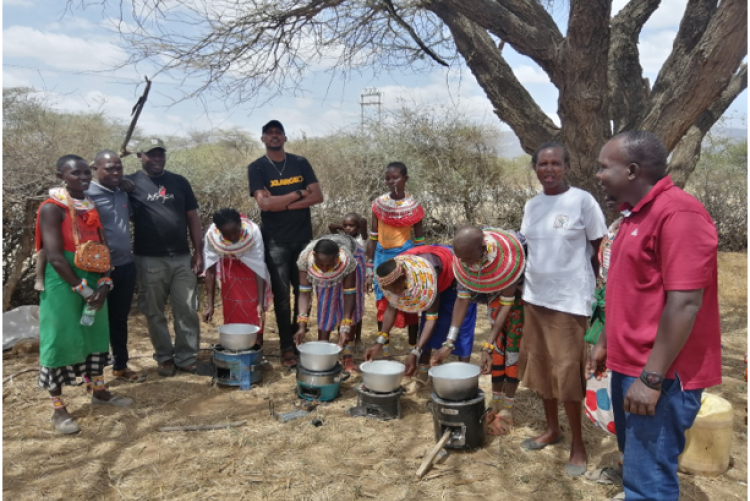There is increasing deforestation in many part of the country due to increasing energy demands by communities. This has greatly affected critical rangeland ecosystems that provided habitat to diverse biodiversity of both livestock and wildlife.
It is evident that there is increasing fuel wood use and charcoal as the main source of energy in all the rangelands of Kenya. This has led to unsustainable utilization of dryland forest and the wood trees within the savanna ecosystems, as observed in Samburu County. Dr. Oscar Koech and Dr. Oliver Wasonga conducted community and ToTs training in Lerata Village on Sustainable wood energy use, energy saving practices and the use of energy saving technologies (Energy saving stoves and cooker) developed in Kenya.
It is worrying to note that that from the discussion during the training, Lerata village with 125 households, Women use 4 trees per household per week, translating to 16 trees per month and 24,000 tree per year! On the other hand, men use about 30 tree per week per household, translating to 120 tree per month and 1440 tree per month, with 125 household, this translates to 180,000 tree per year, mainly for construction of animal kraals, fencing, building, medicinal use, making of hand tools and use for traditional ceremonies like weddings, funerals and initiation.
Sadly, no tree planting initiatives is done by the community. However, the community still has strong customary laws protecting trees, like they only cut when need for use, with coppicing and pruning being major forms of utilization. The training provided practical learning on how energy saving stoves can help reduce the weekly fuel wood used by women, and this would cut the consumption by more than half! For example, demonstration on use of ‘miti moja jiko’ (one wood stove), will save trees compared to the present practice of average 5 wood traditional stoves used in cooking!
The sessions trained community representatives among them was Mr. John Jamaica and Mr. Tomothy Lembara from the Department of Water, Environment, and Natural Resources & Energy as ToTs. The community appreciated the roles of the displayed stoves for energy saving and proposed to develop a strategy as a community to acquire the energy saving stoves. The training was supported by VSF-Suisse in collaboration with the Department of Land Resource Management & Agricultural Technology, University of Nairobi.
- Log in to post comments

